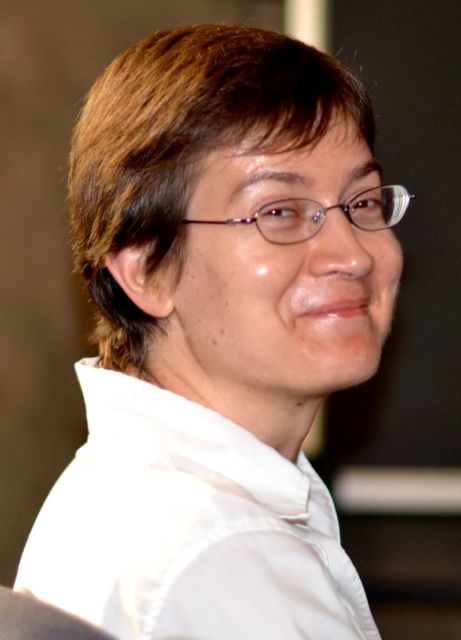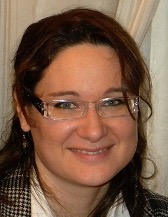Studying at the University of Verona
Here you can find information on the organisational aspects of the Programme, lecture timetables, learning activities and useful contact details for your time at the University, from enrolment to graduation.
Academic calendar
The academic calendar shows the deadlines and scheduled events that are relevant to students, teaching and technical-administrative staff of the University. Public holidays and University closures are also indicated. The academic year normally begins on 1 October each year and ends on 30 September of the following year.
Course calendar
The Academic Calendar sets out the degree programme lecture and exam timetables, as well as the relevant university closure dates..
| Period | From | To |
|---|---|---|
| I semestre | Oct 1, 2019 | Jan 31, 2020 |
| II semestre | Mar 2, 2020 | Jun 12, 2020 |
| Session | From | To |
|---|---|---|
| Sessione invernale d'esame | Feb 3, 2020 | Feb 28, 2020 |
| Sessione estiva d'esame | Jun 15, 2020 | Jul 31, 2020 |
| Sessione autunnale d'esame | Sep 1, 2020 | Sep 30, 2020 |
| Session | From | To |
|---|---|---|
| Sessione Estiva. | Jul 16, 2020 | Jul 16, 2020 |
| Sessione Autunnale. | Oct 15, 2020 | Oct 15, 2020 |
| Sessione Invernale. | Mar 18, 2021 | Mar 18, 2021 |
| Period | From | To |
|---|---|---|
| Festa di Ognissanti | Nov 1, 2019 | Nov 1, 2019 |
| Festa dell'Immacolata | Dec 8, 2019 | Dec 8, 2019 |
| Vacanze di Natale | Dec 23, 2019 | Jan 6, 2020 |
| Vacanze di Pasqua | Apr 10, 2020 | Apr 14, 2020 |
| Festa della Liberazione | Apr 25, 2020 | Apr 25, 2020 |
| Festa del lavoro | May 1, 2020 | May 1, 2020 |
| Festa del Santo Patrono | May 21, 2020 | May 21, 2020 |
| Festa della Repubblica | Jun 2, 2020 | Jun 2, 2020 |
| Vacanze estive | Aug 10, 2020 | Aug 23, 2020 |
Exam calendar
Exam dates and rounds are managed by the relevant Science and Engineering Teaching and Student Services Unit.
To view all the exam sessions available, please use the Exam dashboard on ESSE3.
If you forgot your login details or have problems logging in, please contact the relevant IT HelpDesk, or check the login details recovery web page.
Should you have any doubts or questions, please check the Enrollment FAQs
Academic staff
 mariacaterina.baruffi@univr.it
mariacaterina.baruffi@univr.it
 maurizio.boscaini@univr.it
maurizio.boscaini@univr.it
 federico.busato@univr.it
federico.busato@univr.it
 mila.dallapreda@univr.it
mila.dallapreda@univr.it
Study Plan
The Study Plan includes all modules, teaching and learning activities that each student will need to undertake during their time at the University.
Please select your Study Plan based on your enrollment year.
1° Year
| Modules | Credits | TAF | SSD |
|---|
2° Year activated in the A.Y. 2020/2021
| Modules | Credits | TAF | SSD |
|---|
| Modules | Credits | TAF | SSD |
|---|
| Modules | Credits | TAF | SSD |
|---|
| Modules | Credits | TAF | SSD |
|---|
2 modules among the followingLegend | Type of training activity (TTA)
TAF (Type of Educational Activity) All courses and activities are classified into different types of educational activities, indicated by a letter.
Automated reasoning (2019/2020)
Teaching code
4S02796
Teacher
Coordinator
Credits
6
Language
Italian
Scientific Disciplinary Sector (SSD)
INF/01 - INFORMATICS
Period
I semestre dal Oct 1, 2019 al Jan 31, 2020.
Learning outcomes
The class aims at providing knowledge about the following topics: a) methods for theorem proving and model building; b) inference systems based on orderings (resolution), instance generation, sub-goal reduction (tableaux); c) search plans; d) decision procedures for propositional satisfiability (SAT) and satisfiability modulo theories (SMT). At class' end the student will have to show her capacity to understand inference systems, search plans, and decision procedures, and evaluate them in terms of soundness, completeness and efficiencly, also via the implementation of a prototype. These skills will allow her to use existing resoners, develop new ones, and choose one appropriate for a problem or application. At class' end the student will be prepared to continue her studies or develop a master thesis in automated reasoning or artificial intelligence.
Program
Foundations of automated reasoning: theorem proving and model building. The problem of propositional satisfiability (SAT): the DPLL and CDCL procedures. The problem of validity in first-order logic: inference systems and search plans. The Herbrand theorem. Instance-based inference systems: hyper-linking. Ordering-based inference systems: resolution and paramodulation/superposition. Subgoal-reduction based inference systems: model elimination, tableaux. Search plans: the given-clause algorithm; depth-first search with iterative deepening. Decision procedures for satisfiability modulo theories and assignments (SMT/SMA). Combination of theories. Implementation of a prover or solver as individual project.
| Author | Title | Publishing house | Year | ISBN | Notes |
|---|---|---|---|---|---|
| Daniel Kroening, Ofer Strichman | Decision Procedures. An algorithmic point of view | Springer | 2008 | 978-3-540-74104-6 | |
| John Harrison | Handbook of Practical Logic and Automated Reasoning (Edizione 1) | Cambridge University Press | 2009 | 9780521899574 | |
| Chin-Liang Chang, Richard Char-Tung Lee | Symbolic Logic and Mechanical Theorem Proving (Edizione 1) | Academic Press | 1973 | 0121703509 | |
| Aaron R. Bradley, Zohar Manna | The Calculus of Computation - Decision Procedures with Applications to Verification (Edizione 1) | Springer | 2007 | 9783540741 | |
| Alexander Leitsch | The Resolution Calculus (Edizione 1) | Springer | 1997 | 3540618821 | |
| Martin Davis | The Universal Computer. The Road from Leibniz to Turing. Turing Centenary Edition. | Taylor and Francis Group | 2012 | 978-1-4665-0519-3 |
Examination Methods
First round: the grade is given by 25% PI + 25% PF + 50% P, where PI is the midterm exam, PF is the final exam, and P is a project.
Later rounds: the grade is given by 100% E, where E is a written exam, as hard as midterm, final, and project combined.
Attending all classes is crucial, however the exam rules are the same regardless of whether one attends or not.
All grades will be registered; it is possible to withdraw by informing the instructor.
Type D and Type F activities
Documents and news
-
 PIANO DIDATTICO / DEGREE PROGRAMME LM-18/32 2019/20
(octet-stream, it, 16 KB, 25/03/19)
PIANO DIDATTICO / DEGREE PROGRAMME LM-18/32 2019/20
(octet-stream, it, 16 KB, 25/03/19)
| years | Modules | TAF | Teacher |
|---|---|---|---|
| 1° 2° | The fashion lab (1 ECTS) | D | Not yet assigned |
| years | Modules | TAF | Teacher |
|---|---|---|---|
| 1° 2° | Python programming language | D |
Maurizio Boscaini
(Coordinator)
|
| years | Modules | TAF | Teacher |
|---|---|---|---|
| 1° 2° | CyberPhysical Laboratory | D |
Andrea Calanca
(Coordinator)
|
| 1° 2° | C++ Programming Language | D |
Federico Busato
(Coordinator)
|
| 1° 2° | Matlab-Simulink programming | D |
Bogdan Mihai Maris
(Coordinator)
|
| years | Modules | TAF | Teacher |
|---|---|---|---|
| 1° 2° | Corso Europrogettazione | D | Not yet assigned |
| 1° 2° | The course provides an introduction to blockchain technology. It focuses on the technology behind Bitcoin, Ethereum, Tendermint and Hotmoka. | D |
Matteo Cristani
|
Career prospects
Module/Programme news
News for students
There you will find information, resources and services useful during your time at the University (Student’s exam record, your study plan on ESSE3, Distance Learning courses, university email account, office forms, administrative procedures, etc.). You can log into MyUnivr with your GIA login details: only in this way will you be able to receive notification of all the notices from your teachers and your secretariat via email and soon also via the Univr app.
Graduation
Deadlines and administrative fulfilments
For deadlines, administrative fulfilments and notices on graduation sessions, please refer to the Graduation Sessions - Science and Engineering service.
Need to activate a thesis internship
For thesis-related internships, it is not always necessary to activate an internship through the Internship Office. For further information, please consult the dedicated document, which can be found in the 'Documents' section of the Internships and work orientation - Science e Engineering service.
Final examination regulations
List of theses and work experience proposals
Attendance
As stated in the Teaching Regulations for the A.Y. 2022/2023, attendance at the course of study is not mandatory.


 +39 045 802 7980
+39 045 802 7980


































